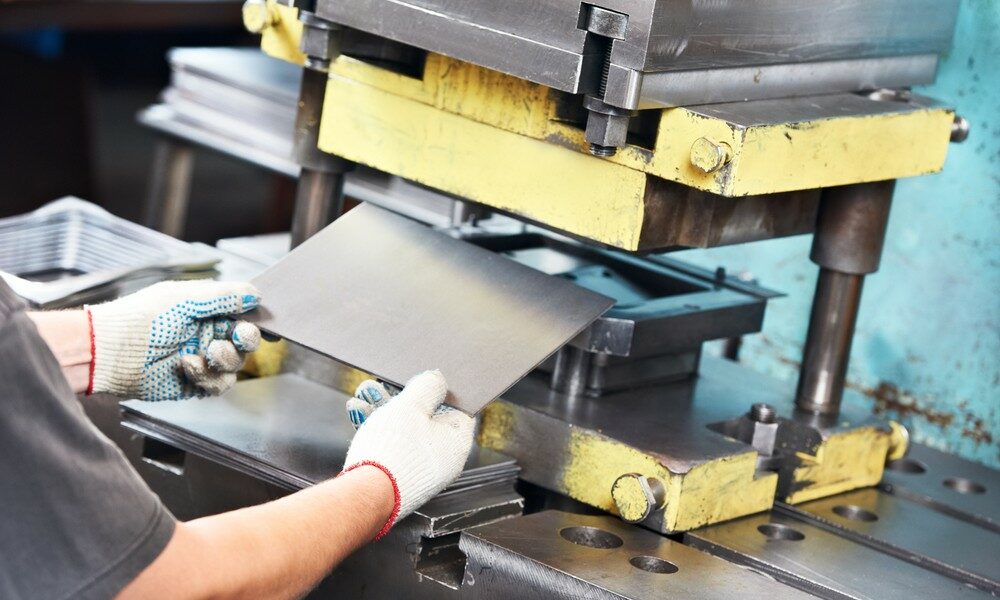The Advancement of Metal Marking Processes: Innovations and Applications
The realm of steel stamping processes has actually observed a transformative journey marked by consistent innovation and adaptation to satisfy the needs of modern industrial methods. The applications extend across a spectrum of markets, each profiting uniquely from the developments in steel marking procedures.
Traditional Metal Stamping Methods
Typical metal stamping techniques have long been the foundation of producing procedures in numerous markets due to their effectiveness and accuracy. The procedure entails creating a steel sheet or coil right into a wanted form by pushing it in between a die and a strike. This approach is widely used for producing large quantities of get rid of high precision at a rapid pace.
One of the key advantages of traditional metal stamping techniques is the capacity to keep limited resistances, making certain that each component satisfies the needed specs constantly. This level of precision is important in industries such as automobile, aerospace, and electronics, where also small variances can cause considerable problems.
Moreover, traditional steel marking methods provide affordable services for mass production compared to various other manufacturing approaches. The capacity to stamp parts in fast succession minimizes manufacturing time and minimizes labor expenses, making it an appealing option for organizations seeking to enhance their manufacturing procedures.
Development of High-Speed Stamping

One of the vital advantages of high-speed marking is its ability to preserve precision and consistency also at accelerated handling rates. This precision is critical in markets where limited tolerances and complex designs are needed. In addition, high-speed stamping enables the handling of a variety of products, consisting of aluminum, stainless-steel, and copper, further broadening its applicability throughout numerous industries.
Moreover, the appearance of high-speed stamping has made it possible for manufacturers to satisfy the expanding need for complex elements in markets such as auto, aerospace, and electronics (Metal Stamping). By leveraging the speed and accuracy of high-speed stamping modern technology, firms can enhance their competitiveness in a rapidly progressing market landscape
Innovations in Tooling Technology
With the advancement of high-speed marking allowing enhanced accuracy and performance in metal forming procedures, the area of metal stamping has actually seen considerable developments in tooling technology. Tooling modern technology plays a critical function in metal marking operations, influencing variables such as product quality, manufacturing speed, and general cost-effectiveness.
By using these innovative materials, tooling producers can generate passes away and molds that endure the high stress and temperature levels involved in metal stamping procedures, resulting in longer device life and better production efficiency. In general, these improvements in tooling modern technology have actually revolutionized the metal stamping market, permitting suppliers to attain greater levels of precision, productivity, and cost savings.
Combination of Automation in Marking
As automation proceeds to reshape the landscape of metal stamping procedures, the assimilation of automated systems has become progressively common in contemporary manufacturing facilities. Automated systems offer numerous benefits in steel marking, consisting of boosted effectiveness, enhanced accuracy, and enhanced safety. By incorporating automation right into see this here marking processes, producers can decrease cycle times, minimize product waste, and maximize manufacturing throughput.
Among the essential components of automation in marking is using robot arms for jobs such as material handling, component manipulation, and top quality assessment (Metal Stamping). These robotic systems can execute repeated and labor-intensive tasks with rate and precision, maximizing human her comment is here operators to concentrate on more intricate operations. Additionally, automation enables real-time monitoring and change of stamping procedures, leading to greater overall procedure control and quality assurance
Furthermore, the combination of automation in stamping allows manufacturers to accomplish regular part high quality, meet tight resistances, and enhance total productivity. As innovation proceeds to advancement, the function of automation in steel stamping processes is anticipated to expand even more, driving technology and efficiency in the image source manufacturing market.
Applications Throughout Diverse Industries
Incorporating metal marking processes across varied markets showcases the flexibility and flexibility of this production method. Additionally, the device market benefits from steel stamping procedures to produce parts for fridges, washing equipments, and other household devices. The versatility of steel stamping procedures makes it a useful manufacturing strategy across numerous industries, showing its significance in modern production procedures.
Final Thought
